The scientific name of this species is Cryptoheros nanoluteus, which belongs to the family Cichlidae . But what makes this fish so interesting? In our opinion, it’s the unique combination of its bright yellow color and intriguing behavior.
Table of Contents
In the wild, Cryptoheros nanoluteus inhabits the bottom and middle layers of freshwater lakes and rivers in Central America . They are omnivores, feeding on a variety of food sources including small invertebrates, algae, and plant matter.
Yellow Convict Cichlids are known for their territorial behavior and can be quite aggressive towards other fish, especially during breeding season . However, they can also be quite docile and make great additions to community tanks with the right tank mates.
A study published in the journal “Cichlid Research” found that Cryptoheros nanoluteus exhibits complex social behavior, including cooperative breeding and parental care . This level of social complexity is rare in the fish world, making the Yellow Convict Cichlid a fascinating subject for study.
Cryptoheros nanoluteus is also known as the “Yellow Convict” or “Nano Convict” in the aquarium trade.
Fun Facts
- Yellow Convict Cichlids are known for their unique “dancing” behavior during courtship, where they will vibrate their bodies and display their bright yellow coloration .
- They are also skilled “sand-sifters”, using their powerful fins to dig and filter food particles from the substrate .
The Yellow Convict Cichlid has been a popular aquarium fish for decades, with the first recorded imports dating back to the 1960s .
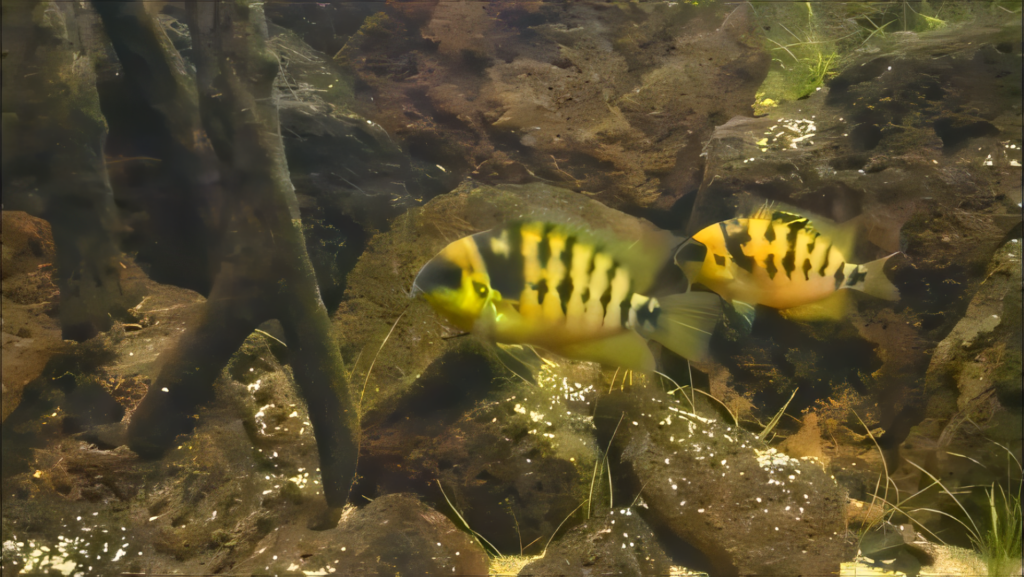
Yellow Convict Cichlid Key Information
The Yellow Convict Cichlid is a stunning species that boasts a vibrant yellow coloration, making it a popular choice among aquarium enthusiasts. But what makes this fish so unique? Let’s dive into the details.
| Family | Cichlidae |
| Origin | Central America |
| Price | Moderate ($10-$20) |
| Common Names | Yellow Convict, Nano Convict |
| Variants | None |
| Ideal Tank Size | 20-30 gallons |
| Water Parameters | pH 6.5-8.5, Temperature 72-82°F (22-28°C) |
| Lifespan | 5-7 years |
| Full Size | 4-5 inches (10-13 cm) |
| Natural Environment | Freshwater lakes and rivers |
| Behavior | Territorial, social |
| Habitat Preference | Bottom-dweller, some vegetation |
| Aquarium Decoration | Rocks, plants, driftwood |
| Ideal Tank Mates | Peaceful community fish (e.g., neon tetras, guppies) |
| Fish to Avoid | Aggressive species (e.g., fin-nippers, territorial fish) |
| Best Foods/Diet | Omnivorous, high-quality flakes or pellets, live/frozen foods |
| Disease | Prone to ich, fin rot, and other bacterial infections |
| Sex-switch | Can occur, but rare |
| Gender Differences | Males have longer fins, more vibrant coloration |
| Care Level | Moderate |
| Breeding Level | Challenging |
Ideal Tankmates for Yellow Convict Cichlid
When it comes to selecting tank mates for your Yellow Convict Cichlid, it’s essential to choose species that are compatible and won’t cause any stress or aggression. Here are ten ideal tank mates that can thrive alongside your Yellow Convict Cichlid.
Each of these species has been carefully selected based on their temperament, size, and swimming level. We’ve avoided aggressive or fin-nipping species that might harass your Yellow Convict Cichlid, and instead opted for peaceful community fish that will complement its behavior.
1. Neon Tetra
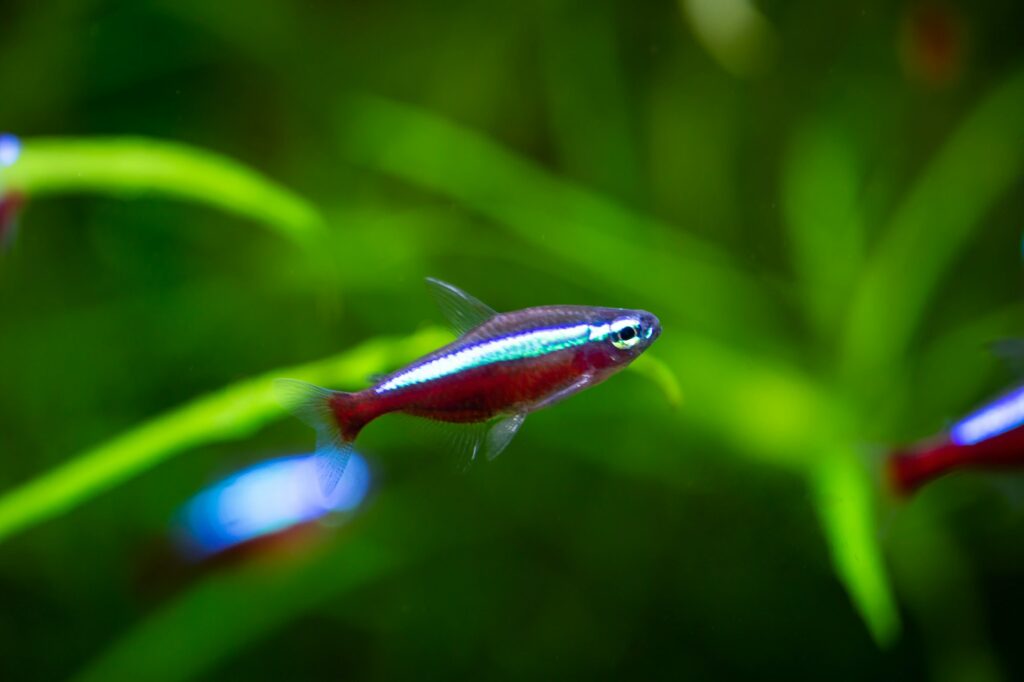
The Neon Tetra is a classic community fish that pairs perfectly with the Yellow Convict Cichlid. Its small size and peaceful nature make it an excellent choice for a community tank. The Neon Tetra’s iridescent blue and red stripes will also add a pop of color to your tank.
| Common/Market Names | Neon Tetra, Paracheirodon innesi |
| Price Range | $1-$5 |
| Care Level | Easy |
| Behavior | Schooling, peaceful |
| Life Span | 5-8 years |
| Max Size | 1-2 inches (2.5-5 cm) |
2. Guppy
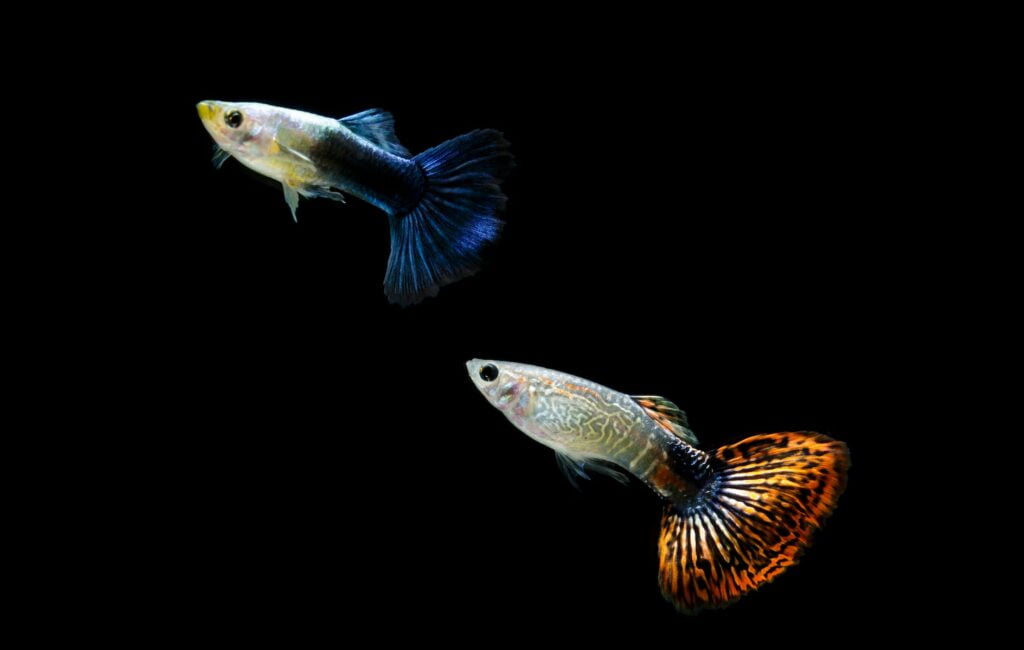
Guppies are another popular community fish that can thrive alongside Yellow Convict Cichlids. Their peaceful nature and small size make them an excellent choice for a community tank. Guppies are also prolific breeders, so be prepared for a population explosion!
| Common/Market Names | Guppy, Poecilia reticulata |
| Price Range | $1-$5 |
| Care Level | Easy |
| Behavior | Peaceful, active |
| Life Span | 3-5 years |
| Max Size | 1-2 inches (2.5-5 cm) |
3. Harlequin Rasboras
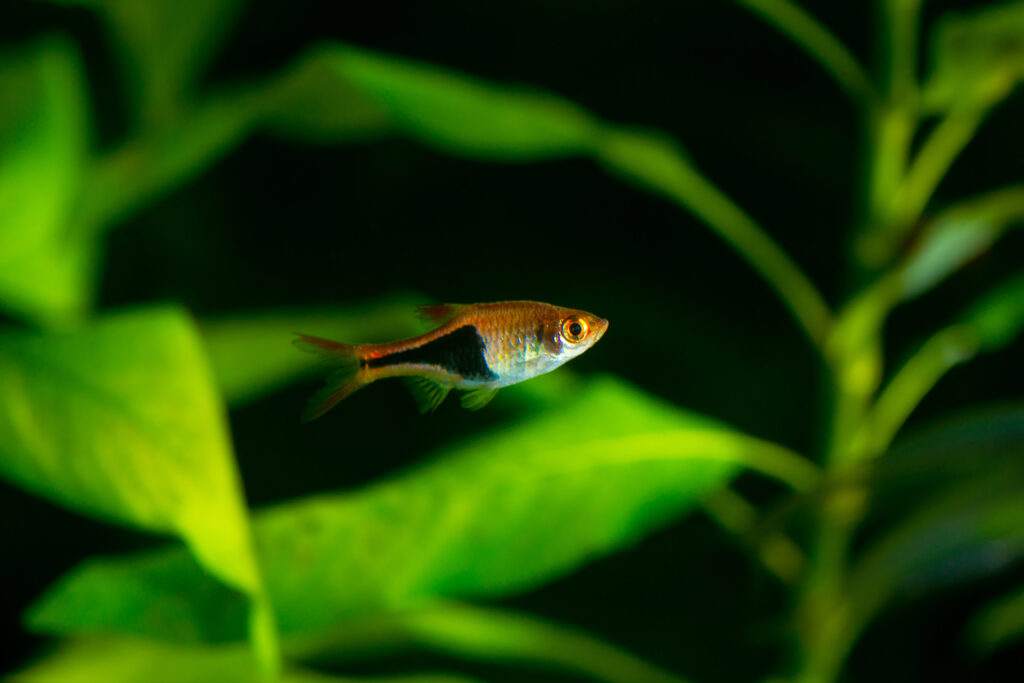
Harlequin Rasboras are a peaceful, shoaling species that can add a lot of movement and interest to your tank. Their orange and blue coloration will also complement the Yellow Convict Cichlid’s bright yellow.
| Common/Market Names | Harlequin Rasbora, Trigonostigma heteromorpha |
| Price Range | $2-$5 |
| Care Level | Easy |
| Behavior | Schooling, peaceful |
| Life Span | 5-7 years |
| Max Size | 1-2 inches (2.5-5 cm) |
4. Zebra Danios
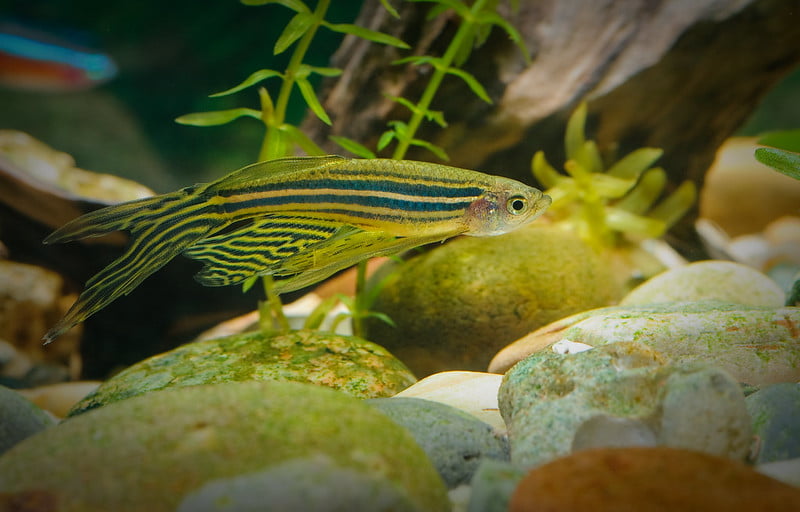
Zebra Danios are active, hardy fish that can tolerate a range of water conditions. Their horizontal stripes will also add a unique visual element to your tank.
| Common/Market Names | Zebra Danio, Danio rerio |
| Price Range | $1-$3 |
| Care Level | Easy |
| Behavior | Active, peaceful |
| Life Span | 5-7 years |
| Max Size | 2-3 inches (5-7.5 cm) |
5. Corydoras Catfish
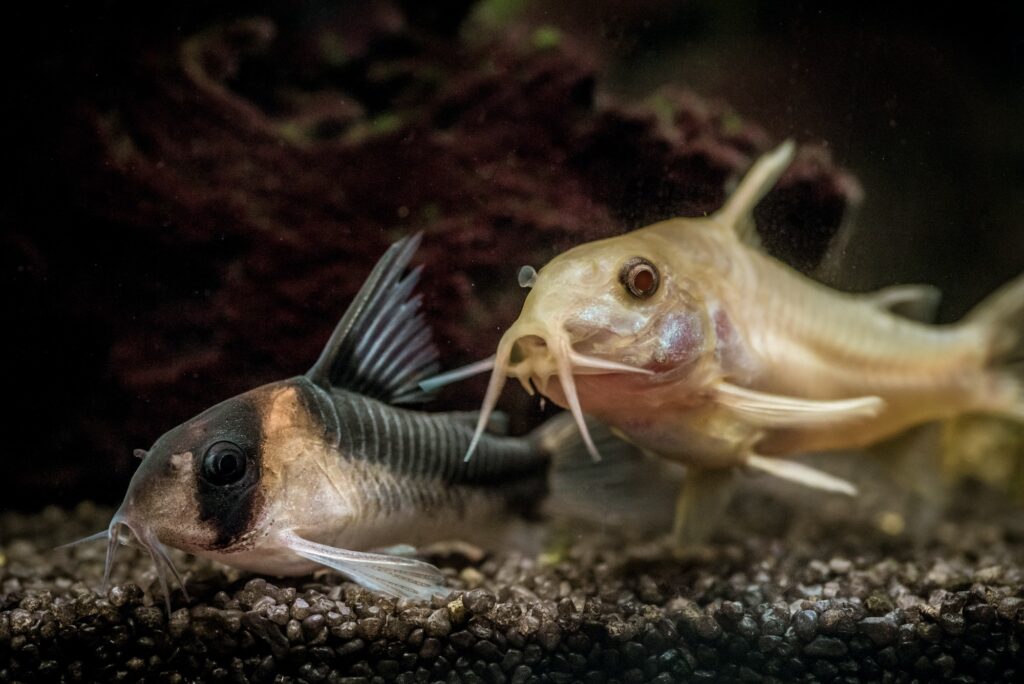
Corydoras Catfish are small, peaceful bottom-dwellers that can help clean up food debris from the substrate. Their armored plates will also protect them from any aggression from the Yellow Convict Cichlid.
| Common/Market Names | Corydoras Catfish, Corydoras spp. |
| Price Range | $2-$5 |
| Care Level | Easy |
| Behavior | Peaceful, bottom-dwelling |
| Life Span | 5-7 years |
| Max Size | 1-3 inches (2.5-7.5 cm) |
6. Lemon Tetra
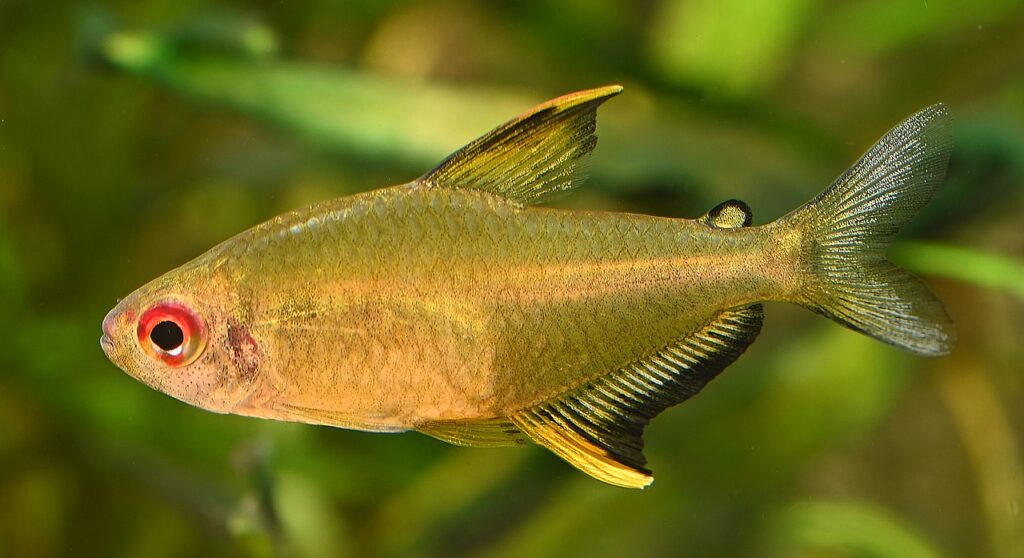
Lemon Tetras are another peaceful, shoaling species that can add a lot of movement and interest to your tank. Their bright yellow coloration will also complement the Yellow Convict Cichlid’s color.
| Common/Market Names | Lemon Tetra, Hyphessobrycon citrinus |
| Price Range | $2-$5 |
| Care Level | Easy |
| Behavior | Schooling, peaceful |
| Life Span | 5-7 years |
| Max Size | 1-2 inches (2.5-5 cm) |
7. Dwarf Gouramis
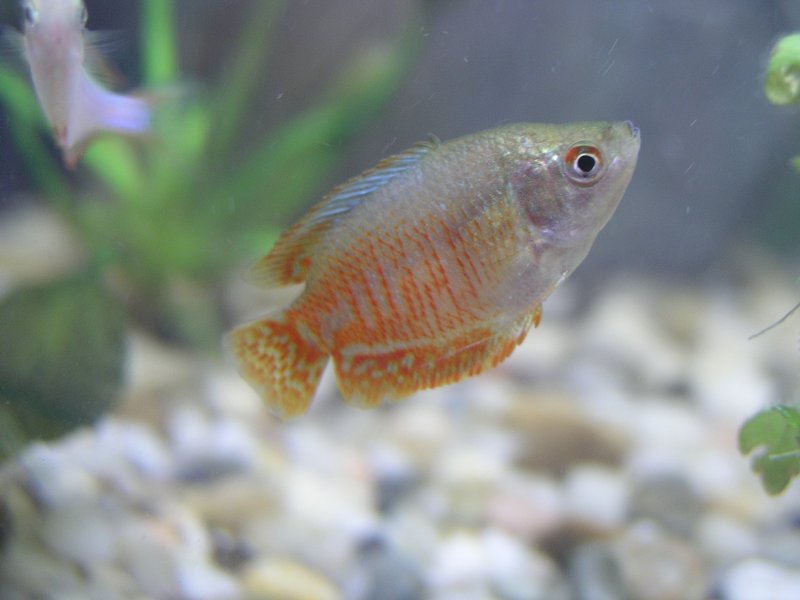
Dwarf Gouramis are peaceful, small fish that can thrive in a community tank. However, be aware that males can be territorial, so it’s best to keep only one male per tank.
| Common/Market Names | Dwarf Gourami, Colisa spp. |
| Price Range | $3-$5 |
| Care Level | Moderate |
| Behavior | Peaceful, territorial |
| Life Span | 5-7 years |
| Max Size | 2-3 inches (5-7.5 cm) |
8. Platies
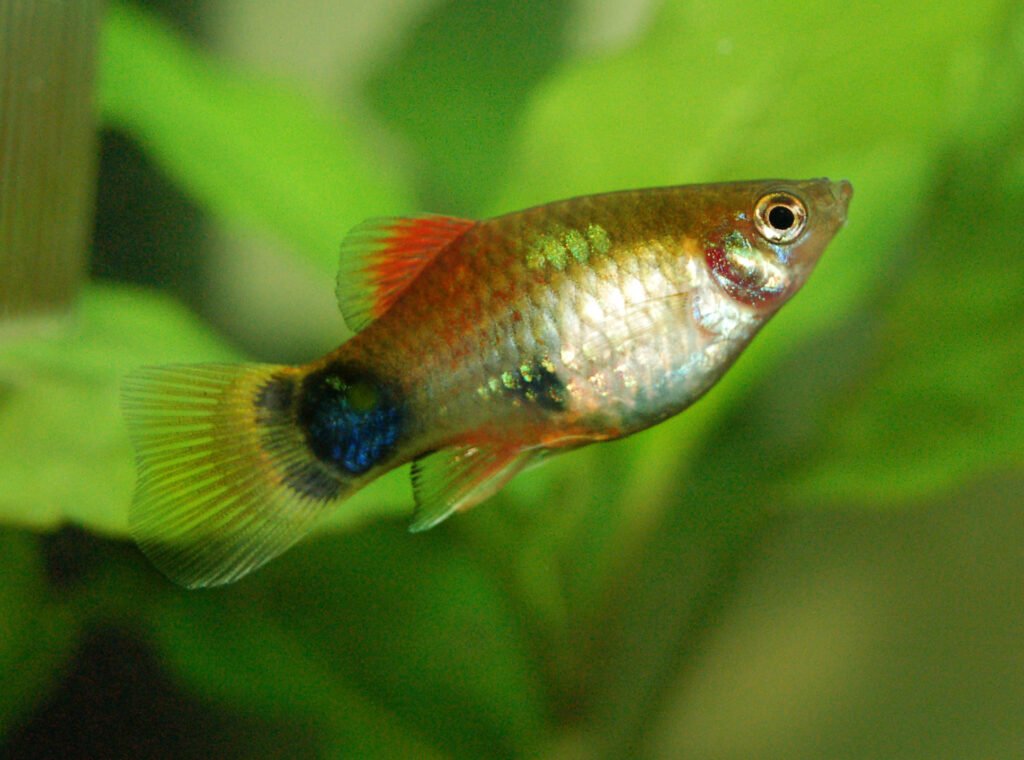
Platies are peaceful, small fish that come in a range of colors. They’re easy to care for and can thrive in a community tank.
| Common/Market Names | Platy, Xiphophorus spp. |
| Price Range | $1-$3 |
| Care Level | Easy |
| Behavior | Peaceful, active |
| Life Span | 3-5 years |
| Max Size | 1-2 inches (2.5-5 cm) |
9. Swordtails
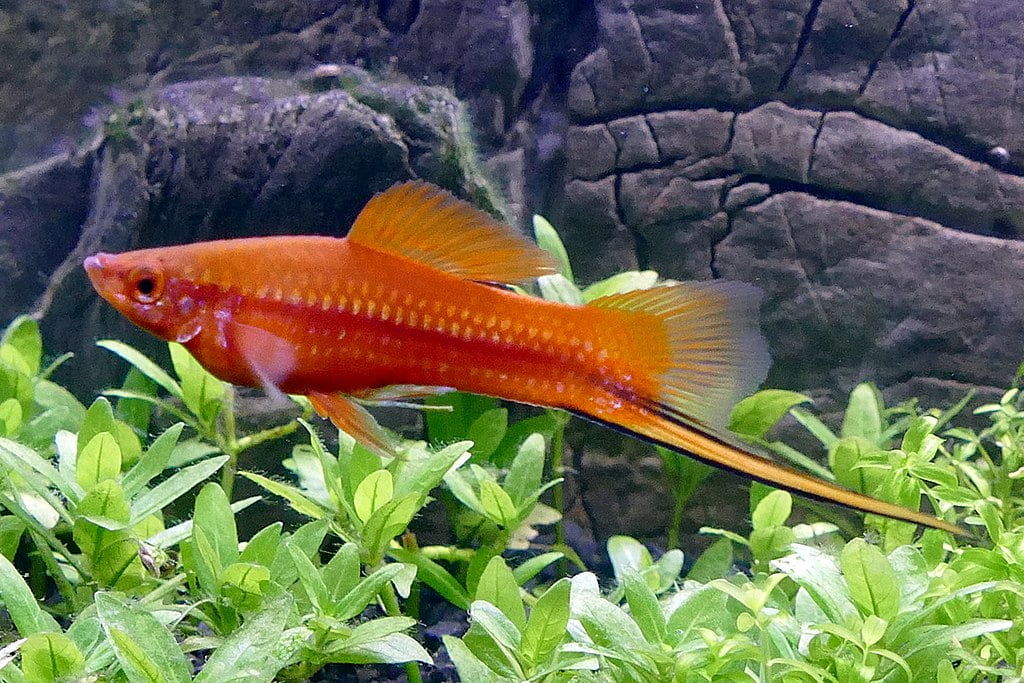
Swordtails are peaceful, small fish that are similar to guppies. They’re easy to care for and can thrive in a community tank.
| Common/Market Names | Swordtail, Xiphophorus helleri |
| Price Range | $1-$3 |
| Care Level | Easy |
| Behavior | Peaceful, active |
| Life Span | 3-5 years |
| Max Size | 2-3 inches (5-7.5 cm) |
10. Mollies
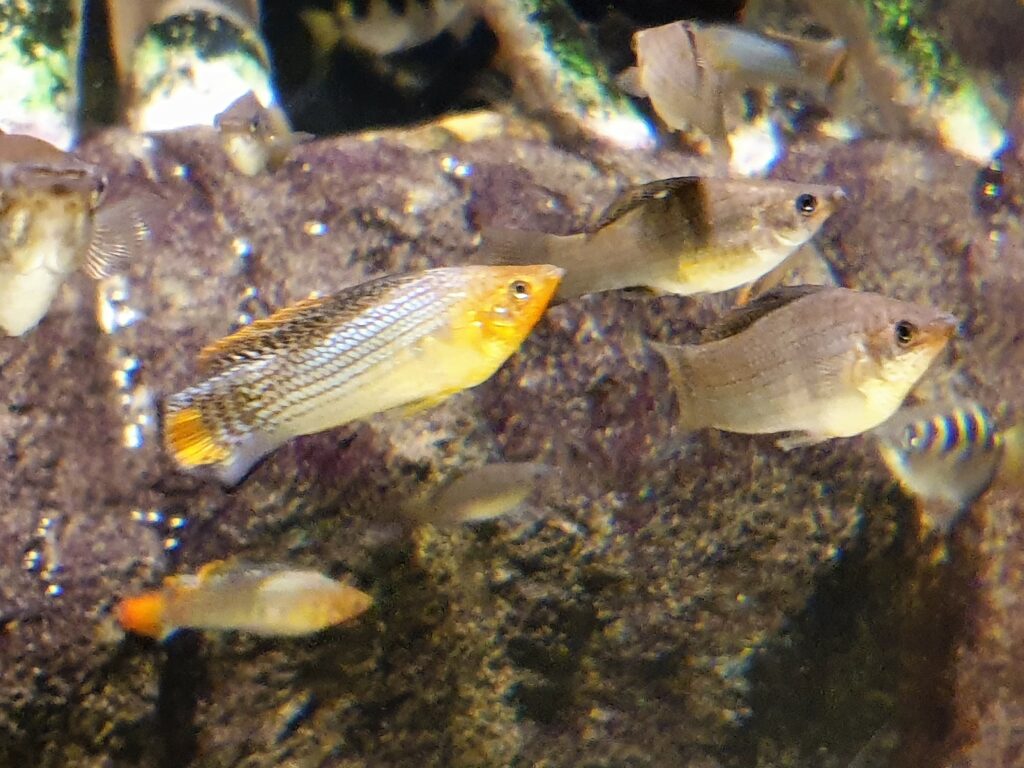
Mollies are peaceful, small fish that are easy to care for. They’re livebearers, so be prepared for a population explosion!
| Common/Market Names | Molly, Poecilia spp. |
| Price Range | $1-$3 |
| Care Level | Easy |
| Behavior | Peaceful, active |
| Life Span | 3-5 years |
| Max Size | 1-2 inches (2.5-5 cm) |
FAQs about Yellow Convict Cichlid
What is the ideal water pH level for Yellow Convict Cichlids?
The ideal water pH level for Yellow Convict Cichlids is between 6.5 and 8.5. This range helps maintain their health and ensures optimal living conditions.
How do Yellow Convict Cichlids respond to changes in their environment?
Yellow Convict Cichlids can be quite sensitive to changes in their environment. Sudden changes in water parameters, temperature, or tank setup can cause stress and lead to aggressive behavior or health issues.
Are Yellow Convict Cichlids prone to any specific diseases?
Yes, Yellow Convict Cichlids are prone to common freshwater fish diseases such as ich, fin rot, and bacterial infections. Maintaining good water quality and a balanced diet can help prevent these diseases.
Can Yellow Convict Cichlids change their coloration?
Yellow Convict Cichlids can change their coloration based on diet and environmental factors. Studies have shown that dietary carotenoids can enhance their yellow coloration, especially in females[1][4].
What is the role of carotenoids in Yellow Convict Cichlids’ diet?
Carotenoids in the diet of Yellow Convict Cichlids play a crucial role in enhancing their coloration. These pigments are deposited in the skin and ovaries, increasing the intensity of their yellow hue[1][4].
How do Yellow Convict Cichlids interact with other fish?
Yellow Convict Cichlids are known for their territorial behavior, especially during breeding. They can be aggressive towards other fish, so it’s essential to choose compatible tank mates and provide plenty of hiding spots.
What is the average lifespan of a Yellow Convict Cichlid?
The average lifespan of a Yellow Convict Cichlid is between 5 to 7 years. Proper care, including a balanced diet and suitable tank conditions, can help them live a full and healthy life.
How can you tell the difference between male and female Yellow Convict Cichlids?
Male Yellow Convict Cichlids typically have longer fins and more vibrant coloration compared to females. Females may also have a more rounded body shape, especially when carrying eggs.
Do Yellow Convict Cichlids exhibit any unique behaviors?
Yes, Yellow Convict Cichlids exhibit unique behaviors such as “dancing” during courtship and “sand-sifting” to find food. These behaviors add to their appeal as interesting and interactive aquarium inhabitants.
What should be included in the diet of Yellow Convict Cichlids?
Yellow Convict Cichlids are omnivores and thrive on a varied diet that includes high-quality flakes or pellets, live or frozen foods like brine shrimp and bloodworms, and occasional vegetable matter. A balanced diet helps maintain their vibrant coloration and overall health.